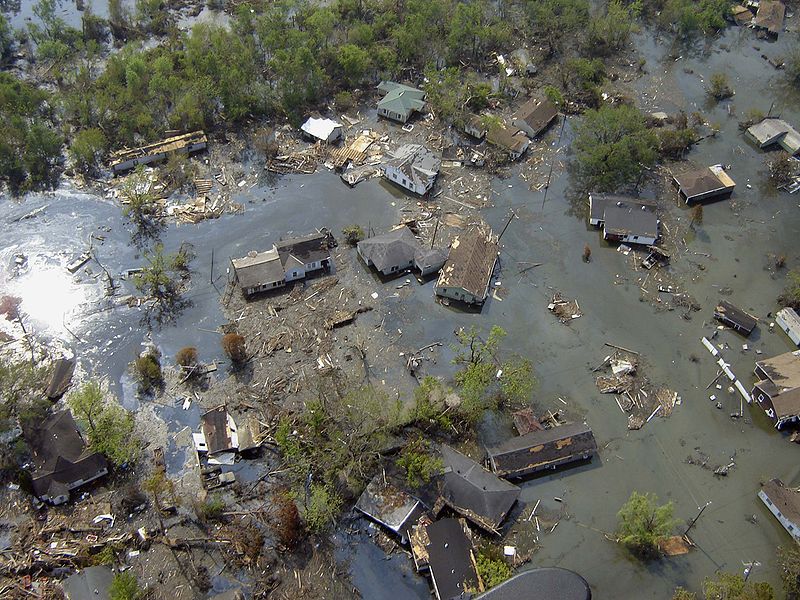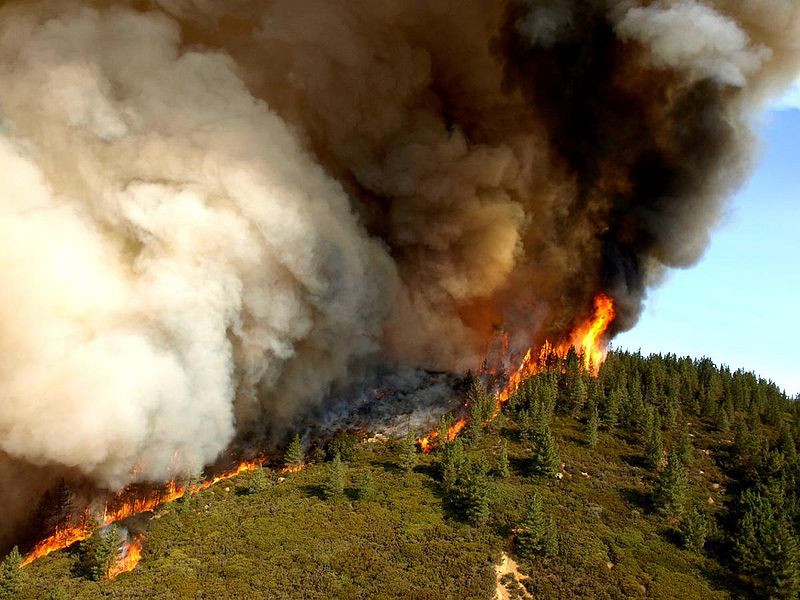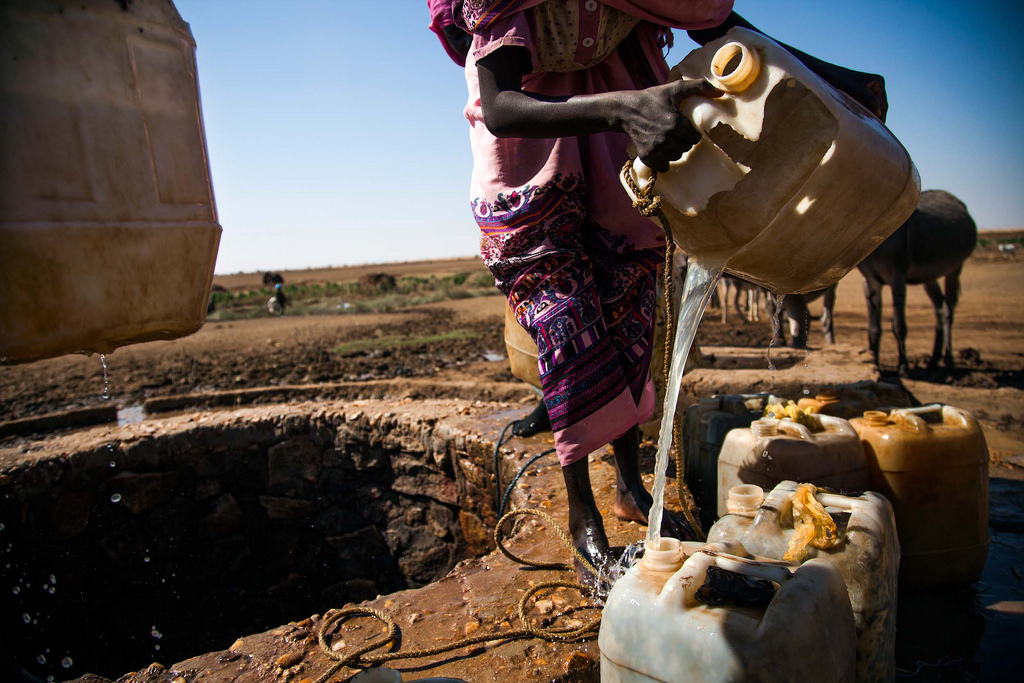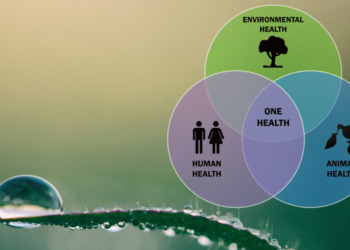The World Health Organization (WHO) projects that climate change will cause 250,000 additional deaths per year between 2030 and 2050. Even accounting for sustained economic growth and health progress, 38,000 additional deaths are expected to be due to heat exposure in elderly people, 48,000 due to diarrhea, 60,000 due to malaria, and 95,000 due to childhood undernutrition. Projections also suggest that children in resource-constrained countries will bear the brunt of adverse health effects attributable to climate change, but other population groups will increasingly feel the effects.
No country, no population group is completely immune to the health effects of climate change. Through a myriad of direct and mediated impacts, climate change is considered to underpin all the social and environmental determinants of health. Thus, the global public health community has seen fit to seize this “opportunity” to better understand how climate affects health, devise strategies to mitigate adverse health effects, and support global efforts to implement adaptations to protect health.
HOW DOES CLIMATE CHANGE AFFECT HEALTH?
The Intergovernmental Panel on Climate Change (IPCC), the leading international body for the assessment of climate change, outlined the main mechanisms by which climate change affects health and wellbeing in a chapter on Human Health: Impacts, Adaptation, and Co-Benefits in its Fifth Assessment Report: (1) fatal and injurious impacts from extreme weather events; (2) shifts in illness and allergens from ecological changes; and (3) impacts on physical and mental health due to changes in and disruptions to human-made systems.
Extreme weather events – such as more intense heat waves and frequent, intense tropical storms – directly affect health via death and injury:
- Heat waves increase the risk for dangerously elevated body temperature. When one’s body temperature significantly exceeds normal, there are numerous potential physiological effects: loss of consciousness, physical impairment, organ damage, and even death. Notably, there are factors that affects one’s ability to survive extreme heat, such as the level of humidity and access to ventilation or air conditioning; but access to such resources is highly variable worldwide and even within smaller regional subdivisions.
- As the number of devastating tropical storms increases, there is an associated increase in flood risk. Health effects associated with flooding include drowning, hypothermia, and infectious disease (e.g. cholera). There can also be mental health effects, namely psychological distress, anxiety, and depression, among those that survive the trauma of the flood event.

IN THE PHOTO: EFFECTS OF HURRICANE KATRINA PHOTO CREDIT: WIKIMEDIA / NOAA / COMMANDER MARK MORAN
The health effects of climate change are also mediated through ecological changes and can affect the distribution of disease vectors, pollution, and allergens:
- Vector-borne diseases, infections spread by the bite of blood-sucking arthropods (e.g. mosquitoes or ticks), are often influenced by weather and climate. As an example, let us consider dengue fever. Currently, dengue is the most rapidly spreading mosquito-borne viral disease in the world. Each year there are 390 million dengue infections worldwide with roughly 96 million manifesting symptoms. Evidence suggests that increases in temperature, humidity, and rainfall – an effect of extreme tropical storms – are associated with increases in dengue incidence. Drought can also be a cause of dengue spread, if households are storing water in open containers that can provide suitable mosquito breeding sites.
- Rising temperatures, along with low rainfall, also increase the likelihood of wildfires, which are associated with smoke inhalation injuries, burns, and death. Wildfires can also contribute to acute air pollution episodes through the release of particulate matter and other toxic substances as they burn through inhabited areas. A projected 339,000 deaths per year are attributable to air pollution from such fires.
- Warmer temperatures are additionally associated with production and release of allergens (e.g. spores and pollen), which may affect rates of asthma and allergic respiratory diseases.

IN THE PHOTO: 2007 ZACA FIRE, NEAR SANTA BARBARA, CA PHOTO CREDIT: WIKIMEDIA / JOHN NEWMAN
The health effects of climate change can also be mediated through human systems affecting nutrition, occupational health, and mental health:
- The amount and quality of food harvested can be negatively impacted by higher temperatures and changes in precipitation. There is also growing evidence that extreme weather events may contribute to higher food prices, which are negatively associated with food consumption. Overall, there is high confidence that climate change will reduce per capita calorie availability, exacerbate childhood undernutrition, and worsen undernutrition-related morbidity and mortality among children, particularly in resource-constrained regions.
- As global temperatures rise, those that are required to work outside in hot conditions, without sufficient opportunities to rest and/or hydrate, are at increased risk for heat exhaustion and heat stroke. Heat stress is also of concern for those that work in indoor environments lacking ventilation or temperature control. Disenfranchised workers in these conditions are at greatest risk of potentially catastrophic health consequences.
- Extreme weather events tend to significantly increase stress, exacerbate existing mental illness, or initiate new mental illness, among those that survive. Enduring extreme weather events is an acute exposure to trauma that can manifest in post-traumatic stress disorder, generalized anxiety, or depression. Extended extreme weather events, such as droughts, can induce or exacerbate psychological distress and suicide incidence. Extreme weather events can also induce “solastalgia“, a distressing sense of loss that people experience when their land is damaged and they lose resources and opportunity.
RESPONSE TO CLIMATE CHANGE IS “GREATEST GLOBAL HEALTH OPPORTUNITY OF THE 21ST CENTURY”
These findings and projections are understandably concerning, but rather than cause for despair, overcoming these challenges has been framed as an opportunity to be seized by the global community. In fact, the 2015 Lancet Commission on Health and Climate Change reasoned that responding to climate change could be the greatest global health opportunity of the 21st century.
As part of this response, international bodies have made concerted transnational efforts to prioritize understanding the health effects of climate change and develop strategies for curtailing potential adverse health effects.
For example, WHO was instrumental in devising the Ministerial Declaration on Health, Environment and Climate Change at the 2016 UN Climate Change Conference (COP-22) in Marrakech. WHO also organized events on climate and health at the 2015 UN Climate Change Conference (COP-21) in Paris. Additionally, WHO convenes its own annual Global Conference on Health and Climate. The 2016 Conference had the express purpose of devising the strategies the global public health community could use to support the implementation of the Paris agreement from COP-21 and help construct healthier and more sustainable societies.

IN THE PHOTO: OPENING CEREMONY OF THE MARRAKECH CLIMATE CHANGE CONFERENCE PHOTO CREDIT: FLICKR / UNCLIMATECHANGE
There is also the work of The 2015 Lancet Commission on Health and Climate Change, which was formed to map out a comprehensive response to climate change that would ensure positive health outcomes across the globe. The Commission issued this “roadmap” in a report with front-lined policy recommendations:
- Improve monitoring, surveillance, and research of the health effects of climate change
- Develop and implement health systems that are resilient against effects of climate change
- Reduce carbon emissions by rapidly phasing coal out of the global energy mix
- Develop urban environments that promote healthy lifestyles
- Create the framework for a robust, predictable global carbon pricing mechanism
- Expand access to renewable energy sources, especially in resource-constrained countries
- Quantify the potential health benefits of a low-carbon economy (in terms of prevented disease, reduced healthcare costs, and increased economic productivity)
- Facilitate collaborations across government agencies to ensure health and climate are considered in all policies
- Implement an international agreement that supports countries, especially those that are resource-constrained, in transitioning to a low-carbon economy
The Commission also developed Countdown to 2030: Global Health and Climate Action, an international, multidisciplinary research collaboration between academic institutions to monitor progress on the implementation of climate change policies that promote health over the next 15 years.
Furthermore, there are the massive efforts of the IPCC in pulling together all relevant, current evidence on the multifaceted effects of climate change on health, natural and managed resource systems, human settlements, industry, infrastructure, and security for its robust Assessment Reports.
These are just a few of the global entities that have conducted research, issued reports, and convened meetings on climate and health. These efforts have yielded numerous recommendations for changes to policy, governance, infrastructure, and human systems so our societies can adapt to protect human health as climate continues to change.
HOW CAN WE ADAPT, IN THE MIDST OF CLIMATE CHANGE, TO PROTECT HEALTH?
The necessary adaptations for health protection in the face of climate change are place-specific and depend on multiple factors. Some factors include: current burden of illness; current vulnerabilities; feasibility of implementing certain interventions; and the social, economic, and political context in which the intervention is being implemented.
Current population health status may be the single most important predictor of future climate change-related health effects and potential costs of adaptation. Most health adaptations involve modifications to disease surveillance, exposure monitoring, disaster risk management, and cross-sector collaboration systems. For example, in Benin, a proposed part of the national response to rising sea levels and accompanying flood risk was to expand health insurance arrangements to ensure effective treatments for malaria and enteric infections could be deployed quickly.
Adaptation can also include “vulnerability mapping”, which is increasingly being used to understand current and future health risks related to climate change. Vulnerability mapping can involve charting social and economic resources, infrastructure, and other factors that influence disease transmission and wellbeing at neighborhood and regional levels. These maps can be used to guide adaptation investments and actions. For example, a map of surface temperatures and urban heat island effects – at the neighborhood level – could indicate where urban cooling measures, such as city greening, could be effective, and alert public health officials to populations that may be at the greatest health risk during heat waves.
Early warning systems have also been a critical part of adaptations to protect human health. Early warning systems are increasingly being implemented for heat waves, particularly in high-income countries. Evidence has shown fewer deaths during heat waves after implementation of such systems. Such systems have also been developed for vector-borne and food-borne infections, although there is limited evidence of their effectiveness in reducing disease burdens.
Moreover, the factors that influence human health are not confined to the health sector. For example, water and sanitation, agriculture, housing and development, energy, transportation, and land use management are non-health specific sectors, but they all conduct work that affects health. Additionally, each of these sectors will be contending with their own sector-specific effects of climate change. Adaptation strategies in other sectors could yield positive health benefits (e.g. improving water quality through re-vegetating watersheds) and/or increase health risks (e.g. designing urban wetlands with a focus on flood control, but without regard for potential promotion of mosquito breeding). Therefore, cross-sector communication and collaboration will be an integral part of any successful adaptation plan.
***
Climate change is real and so are its effects on health. Responding to climate change to mitigate adverse health effects requires concerted action at national and regional levels, in public and private sectors, and major players in the global public health arena have been working to help establish consensus, provide technical support, and monitor progress on adaptation efforts. Individuals can also play a role by arming themselves with climate facts, advocating for important environmental policies, supporting sustainable projects, and using fuel and energy efficient options when possible, to reduce individual carbon emissions.
Related articles:
“HOW CLIMATE CHANGE CONTRIBUTES TO GLOBAL PUBLIC HEALTH CRISES” by Andrew Budsock, (M.A.)
“COMING TOGETHER ON CLIMATE CHANGE” by Annis Pratt
EDITOR’S NOTE: The opinions expressed here by Impakter.com columnists are their own, not those of Impakter.com.
Photo credit: UNEP – 2014 © Alberto González Farran/UNAMID/UN Environment










